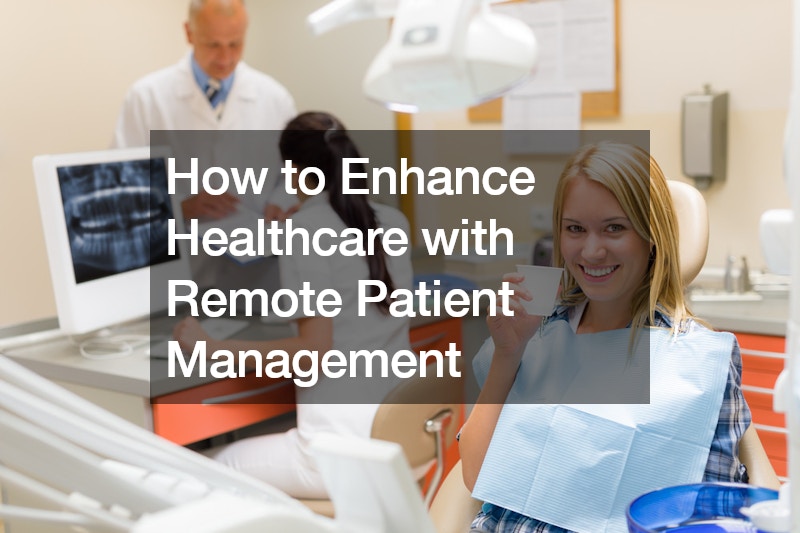
Imagine a world where healthcare extends beyond the sterile walls of a clinic. A world where patients receive continuous monitoring and support from the comfort of their homes. This isn’t a scene from a futuristic film; it’s the exciting reality of remote patient management (RPM).
So, what exactly is RPM? Think of it as a game-changer in healthcare delivery. It utilizes technology to monitor a patient’s health data remotely, allowing healthcare providers to proactively manage chronic conditions, improve treatment outcomes, and ultimately empower patients to take charge of their own health.
Why is RPM Such a Big Deal?
With chronic diseases on the rise around the world, traditional healthcare systems are under immense pressure. RPM offers a powerful solution by:
Improving Chronic Disease Management: RPM allows for continuous monitoring of vital signs (like blood sugar and blood pressure) and symptoms. This real-time data empowers healthcare providers to adjust treatment plans remotely and identify potential issues before they escalate. Enhanced Patient Engagement: RPM fosters a more proactive approach to healthcare. Patients become active participants in their own well-being, receiving regular reminders for medication adherence and lifestyle modifications. Reduced Hospital Readmissions: By identifying and addressing potential health concerns early on, RPM can help prevent complications and reduce the need for costly hospital readmissions. Improved Patient Outcomes: With closer monitoring and timely interventions, RPM can lead to better management of chronic conditions and improve overall patient health. Beyond the Benefits: How Does RPM Work?
The magic of RPM lies in its technological backbone. Here are some key components:
Wearable Devices: These handy gadgets like smartwatches or blood pressure cuffs collect real-time health data and transmit it securely to a central platform. Mobile Apps: User-friendly apps allow patients to track their health data, log symptoms, and communicate with healthcare providers conveniently. Telemedicine Platforms: These secure platforms enable virtual consultations, allowing healthcare providers to remotely monitor patients and adjust treatment plans as needed. Is RPM Right for You?
RPM isn’t a one-size-fits-all solution. However, it can be particularly beneficial for those living with chronic conditions like:
Diabetes: Remote monitoring of blood sugar levels allows for better management and reduces the risk of complications. Heart Disease: Continuous monitoring of blood pressure and heart activity helps healthcare providers identify potential issues early on. Chronic Respiratory Conditions: RPM can help track symptoms like shortness of breath and allow for timely interventions. Getting Started with RPM: A Patient’s Guide
Curious about exploring RPM? Here are some steps to get you started:
Talk to Your Doctor: Discuss your health needs and see if RPM is a suitable option for you. Your doctor can recommend RPM programs and compatible devices. Choose a Program: Several healthcare providers and third-party companies offer RPM programs. Consider factors like cost, features, and compatibility with your devices when choosing a program. Get Equipped: Once enrolled, you’ll likely receive wearable devices and access to a mobile app. Don’t hesitate to ask for training on using the equipment and app effectively. The Future of Healthcare is Remote (Patient Management, That Is!)
The integration of RPM into healthcare systems holds immense promise for the future. Imagine a world where patients feel empowered and supported in managing their health, and healthcare providers have access to real-time data for better decision-making. RPM is paving the way for a more personalized, efficient, and ultimately, a more successful healthcare experience for everyone.
Beyond the Blog: Additional Resources on RPM
If you’re interested in learning more about RPM, here are some helpful resources:
RPM is an exciting innovation with the potential to revolutionize healthcare. By embracing this technology and working collaboratively with your healthcare providers, you can take control of your health journey and experience a more empowered approach to managing your well-being. So, are you ready to bridge the distance and explore the world of RPM? Here are some additional points to consider:
Security and Privacy: RPM programs handle sensitive health data. Ensure the program you choose adheres to strict security protocols and data privacy regulations. Technical Support: Not everyone is tech-savvy. Choose a program that offers adequate technical support to help you troubleshoot any issues with devices or apps. Cost Considerations: While some insurance plans may cover RPM programs, there might be associated costs. Discuss all cost implications with your healthcare provider and chosen program beforehand. Embrace the Future of Healthcare
Remote patient management isn’t just a technological marvel; it’s a paradigm shift in healthcare delivery. By empowering patients and fostering collaboration with healthcare providers, RPM has the potential to create a more efficient, effective, and, ultimately, a more positive healthcare experience for everyone. So, take the first step towards a healthier future. Talk to your doctor, explore the possibilities of RPM, and embrace the exciting world of remote patient management! Bonus Tip: Don’t Go It Alone! Building a Support Network for Successful RPM While RPM empowers you to take charge of your health, remember you don’t have to navigate this journey alone. Building a strong support network can significantly enhance your RPM experience:
Healthcare Team: Maintain open communication with your doctor, nurses, and other healthcare professionals involved in your care plan. Share your RPM data regularly and address any concerns you might have. Family and Friends: Enlist the support of your loved ones. Ask them to remind you to take medications, track symptoms with you, or simply offer encouragement along the way. Support Groups: Connecting with others facing similar health challenges can be invaluable. Support groups offer a safe space to share experiences, ask questions, and gain valuable insights from others using RPM. By building a strong support network, you’ll feel more empowered, motivated, and ultimately, more successful in managing your health with the help of RPM.
The Final Word: A Brighter, Healthier You
Remote patient management is more than just a technological trend; it’s a gateway to a healthier future. By embracing RPM, you’re taking control of your health, receiving proactive care, and fostering a more collaborative relationship with your healthcare providers. So, ditch the isolation of traditional healthcare models and step into a world of empowered well-being with the help of remote patient management. Remember, a healthier you is just a click, tap, or (depending on the device) a blood pressure cuff reading away!
.




